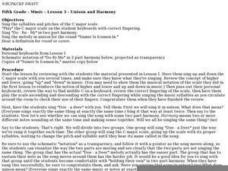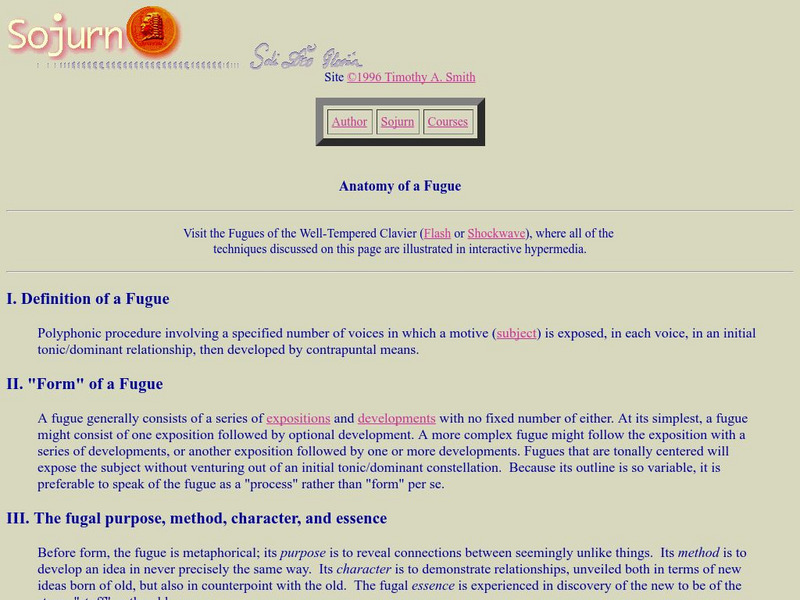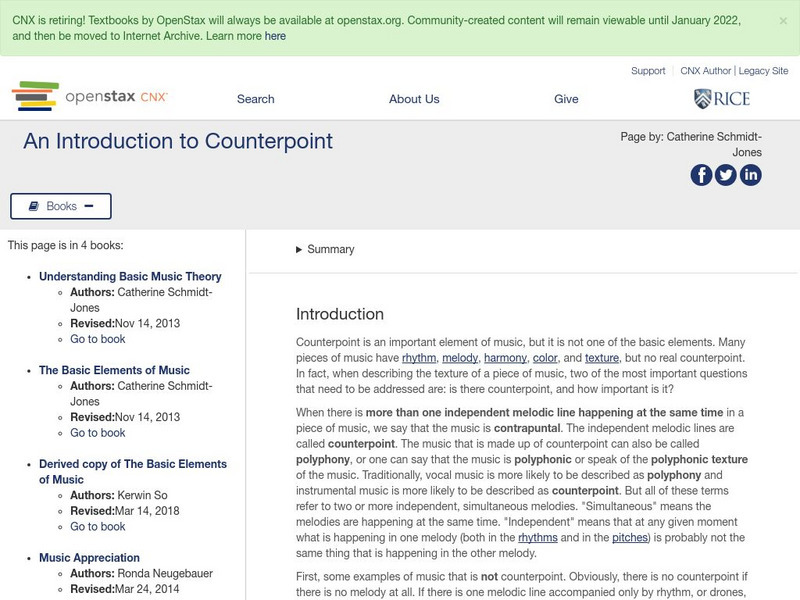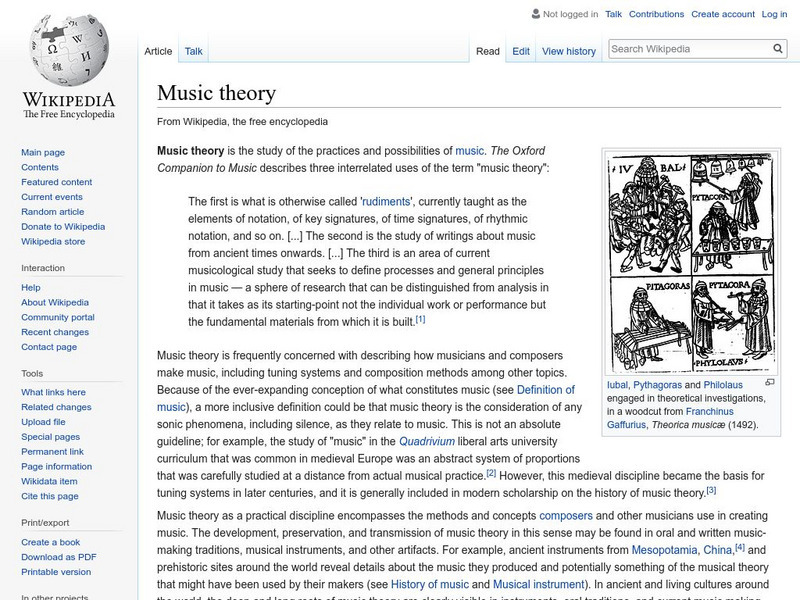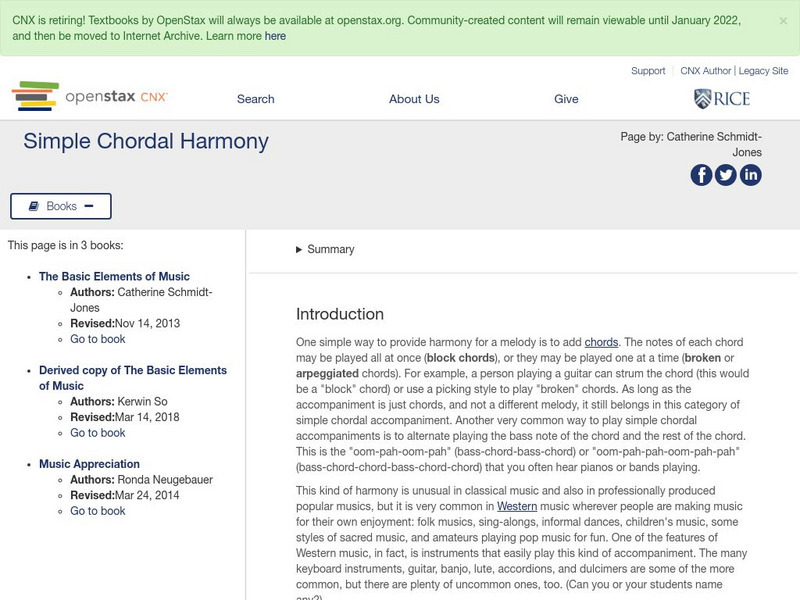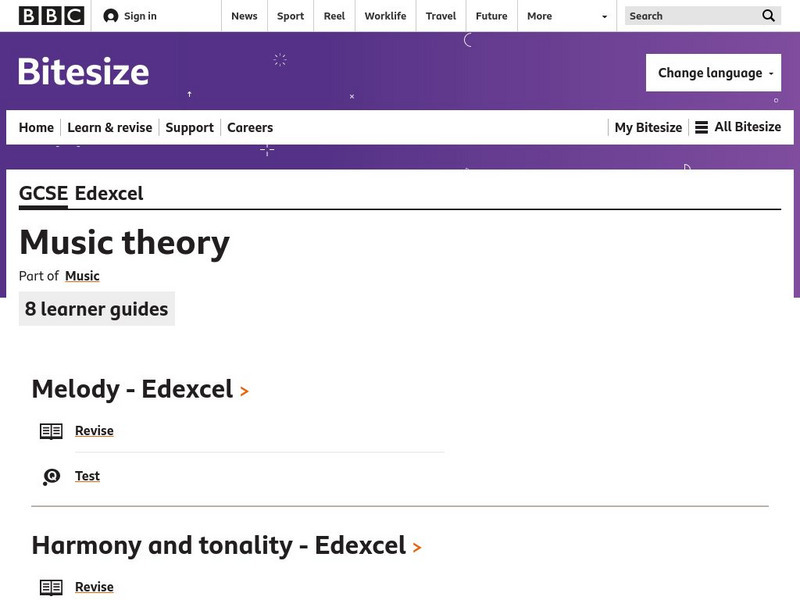Curated OER
The Rhythm of Life - Episode 3 - Harmony
Students complete a unit on musical harmony. They listen to examples of three part harmonies, watch a video, complete a data sheet, prepare a report on the history of harmony, and complete a multimedia report on music for the movies.
Curated OER
Hey, Cuz!
Third graders examine the relationships between rhythm and math, tone color and science, form and geography, melody and art, and harmony and social studies. Why, they are like cousins! Students, in groups, present projects demonstrating...
Curated OER
Fifth Grade Music: Lesson 3 - Unison and Harmony
Fifth graders sing the syllables and pitches of the C major scale, and sing Do - Re - Mi in two-part harmony. They discuss the definition for round and canon, and contrast gamelan music of the Spice Islands with reggae from Jamaica.
Massachusetts Institute of Technology
Mit: Open Course Ware: Harmony and Counterpoint I
A complete online course on the topic of harmony in music. Resource offers projects and examples, assignments, and exams with solutions.
Massachusetts Institute of Technology
Mit: Open Course Ware: Harmony and Counterpoint Ii
A complete, undergraduate level online class on harmony in music. Resource includes all course materials, projects, examples, assignments and exams with solutions.
Northern Arizona University
Northern Arizona University: Sojurn: Anatomy of a Fugue
A wonderful site with detailed descriptions of most of the aspects of a fugue, including some examples. The article gets very technical so a background in music theory would be helpful before exploring this site.
Other
Louvre Museum: A Closer Look at the Titeux Dancer
Media-rich module examines a terracotta figurine that embodies many characteristics of classical Greek sculpture. Expert commentary accompanied by animated overlays demonstrate details of the composition that give it harmony, balance,...
OpenStax
Open Stax: Catherine Schmidt Jones: Counterpoint for Everyone
Introducing your students to counterpoint is what this lesson is all about. This well written and well organized plan will enable you to teach this musical concept to your class.
Annenberg Foundation
Annenberg Learner: Exploring the World of Music
This 12-video series examines elements of music such as melody, harmony, rhythm, and texture, and how they are used in a wide variety of music genres in cultures around the world.
Wikimedia
Wikipedia: Music Theory
Wikipedia offers detailed information on music theory, a set of systems for analyzing, classifying, and composing music and the elements of music.
Other
Natomas High School: Design Principles: Proximity
A review of the principle of proximity as it applies to visual communication. Ends with a poster project lesson that underscores proximity and related concepts.
Northern Arizona University
Northern Arizona University: Sojurn: How to Analyze a Fugue
This page is very helpful in analyzing and understanding fugues. Great site for music theory students and teachers.
Quia
Quia: Musical Elements
A great matching game to reinforce music vocabulary and an understanding of the elements of music.
OpenStax
Open Stax: Catherine Schmidt Jones: Simple Chordal Harmony
This is an activity that teaches students how to add simple chords to a melody. Included are several activies and procedures to help with implementation.
BBC
Bbc: Music Theory
This resource presents a fun and interactive way to learn all about the elements of music. It offers links to information, definitions, assessments, and examples of melody, harmony and tonality, structure, tempo, metre and rhythm,...
ArtLex
Art Lex: Beauty
Definition of "beauty" according to ArtLex, a dictionary of art terms. Includes links to other important terms as well. A good place to start.
ArtLex
Art Lex: V Page
A brief but effective definition of the Principle of Design known as Variety. There are links to other terms within the definition as well as quotations useful to the topic.
ArtLex
Art Lex: Harmony
This site from Artlex provides a brief but effective definition of the Principle of Design known as Harmony. There are links to other terms within the definition as well as quotations by Cezanne, Seurat and Ingres.
Other
Design and Colour
A site by watercolor artist John Lovett. He describes the Elements of Art and Principles of Design and gives tips and techniques for watercolor painting and for composition.
University of Illinois
University of Illinois Urbana Champaign: Learning Musical Elements Through Listening
This is a site created for teaching children the art of listening to music. Includes sections on the elements of music, composers, and genres with more under construction.
Music Theory
Music theory.net
An online beginning music theory and ear training site. This site is for students to use at home to reinforce what they learn in class.
Palomar Community College District
Palomar College: Two Dimensional Design Notes: Similarity and Proximity
College-level instructor's notes on two key principles of design: similarity and proximity. Collage project how-tos also provided.
Other
Blue Moon Original Oil Paintings: The Principle of Unity
Illustrated essay on the principle of unity, also known as harmony, explains how the grouping techniques of alignment, proximity, similarity, and continuity can be used to create a unified, harmonious composition.




